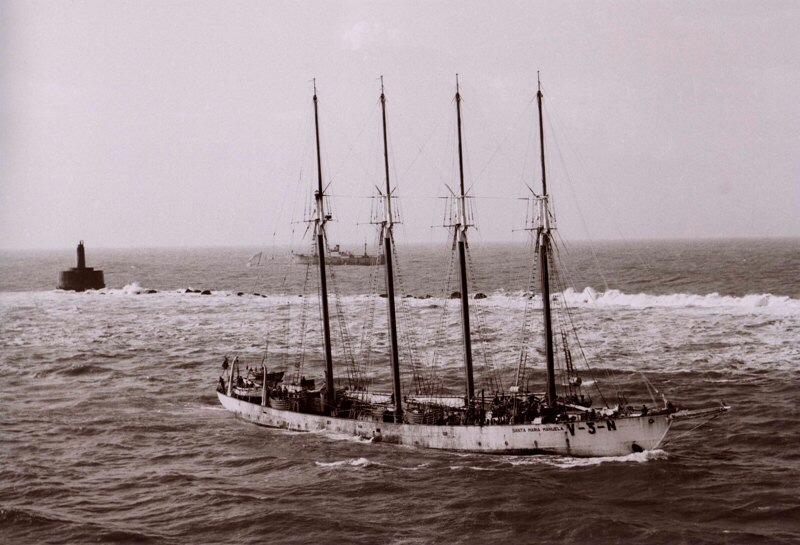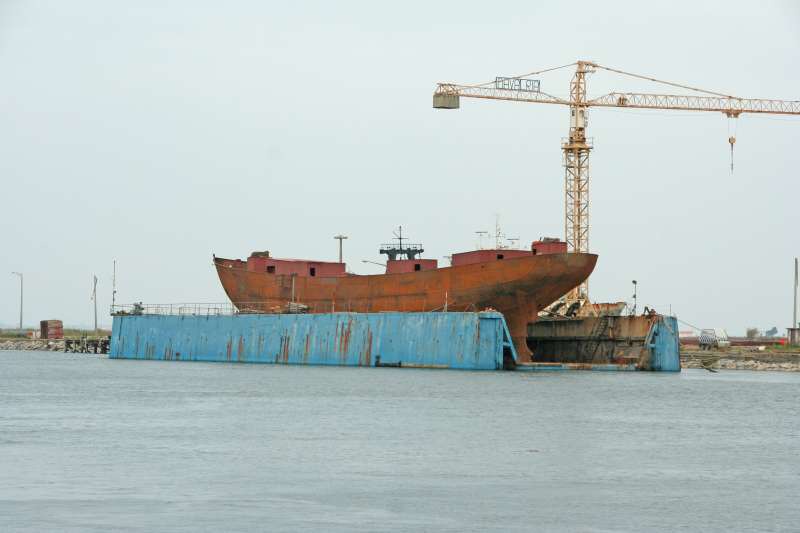Portugal has a very rich fishing history, especially off the shores of Newfoundland. For hundreds of years, Portuguese schooners brought their fishermen to the grounds of the Grand Banks, lowering their small dories into the water. These men would fish all day using hand lines (or later, small trawl nets), returning to their ships at night to offload, salt, prepare, and store their catch. While it seems like it would be a simple life, it was dangerous. You could get trapped between your dory and the hull of your vessel, lost in the fog, or if a storm came up, you could be swept away. Some men just disappeared.
This past weekend, St. John’s welcomed a Portuguese warship to the harbour for a third year in a row. The crew makes a trip up to Mount Carmel cemetery next to Quidi Vidi Lake to pay their respects at the grave of a fisherman whose identity was unknown, until recently. This marker served as a way for people to remember all of the lives that have been lost on the waves.
Now if you want to learn more about the actual service, you can read an article here, and I will have a whole feature about the ship that was here later this week. For this weeks edition of Over the Waves, I wanted to look back at the Golden Days of the cod fishery, and talk about a ship that has made it through the trials and is still floating today… The Santa Maria Manuela.
Ship Stats
Nationalty: Portuguese
Length: 62.6m
Beam: 9.9m
Draught: 4.5m
Year: 1937
Crew: 22
Fishermen: 50
The Santa Maria Manuela was built in 1937 in the GUV shipyards of Lisbon, Portugal. With her sister ships the Argus and Creoula, she sailed the Grand Banks and the coast of Greenland for cod from 1937 to 1963 with the Portuguese fishing fleet. During World War II, Portugal painting the hulls of it’s vessels white to show their neutrality. This tradition continued well past the war, and earned the fleet the name “The White Fleet”.
With the introduction of trawlers to the Grand Banks, the fish stocks began to decline. When the cod fishery collapsed in the 1970s, the hand liners and dories were retired, with the fishermen themselves going to work on trawlers or on the same vessels registered under different countries. The Santa Maria Manuela, however, met a different fate.
In 1994, after years of being tied up to a jetty in Portugal, the hull was scheduled for demolition. A heritage foundation was created and in 1997, the hull was put under protection. In 2007, the company Pascoal e Filhos (Pascoal & Sons, Inc.) agreed to take on the responsibility of the restoration. She was rebuilt as close to her original glory as she could be, with the addition of modern electronic systems and accommodations.
After the restoration was complete, she took on a new crew and was listed as an official Tall Ship. She sailed back through the Narrows of St. John’s in 2011, which was when the first memorial for the lost fisherman happened.
It’s rare that a vessel with such a rich history could be recovered and maintained, but the group that came together to restore the Santa Maria Manuela has accomplished something remarkable. The ship now tours the world, bringing the stories of Portugal’s strong history to places that may not know as much about them.
That’s all for now! Have an excellent week and keep an eye out for the special Portugal warship feature, later this week.
Follow me on Twitter for updates, photos, news and more! @OriginalShipstr


Discussion
No comments yet.